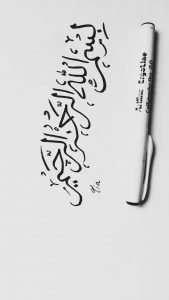I am a professional artist who has been working in the art industry for more than 15 years. I have worked as a designer and illustrator, and I have also worked with major galleries in London and New York. In the past few years, I have been producing abstract art paintings which you can see on my website.
Treating paintings like this is something that is really important to me. I want to introduce abstract art to everyone so that they can enjoy it too, as it’s not just for ‘experts’! I am hoping that this blog will let people learn about abstract art and find out more about how it is made.
I will also be sharing information on exhibitions of abstract art, interviews with other artists who work in this field, tips on buying abstract art and more!
Browse through a number of different articles about art, covering topics such as: how to purchase abstract art for your home.
Why Buy Abstract Art?
Abstract Art and the Brain
Abstract Art and the Economy
How to Purchase Abstract Art
Abstract Art: Getting Started
Abstract Art: Why Buy It?
Abstract art has developed since the early 20th century as a style of painting and sculpture, in which the artist seeks to express particular moods and ideas through color, form, line and composition without reference to recognizable subject matter.
Taken from Wikipedia.
That’s one way of describing Abstraction Art. I’m going to take a different approach and call it something else: Poetry in paint/sculpture.
I’m an abstract artist. I’m not a very good one, but I’m learning more about it every day. It is a very interesting form of art that allows me to use my imagination in new ways…
My goal for this blog is to share some of what I have learned so far about abstract art and its history with others who may be interested in learning about it themselves. There are lots of great resources out there on the topic, but many are geared towards experienced artists who already know all this stuff…
Abstraction in art began with the Impressionists who were interested in depicting light and how it affected color, texture and form. For instance, Seurat used tiny dots of color to depict the light reflecting off objects. Later, Kandinsky’s art had a spiritual quality because he was a member of Theosophical Society. He believed that there was a universal spirituality and that art could express it.
Details about abstract art:
Abstract Art refers to the paintings that do not have any figurative elements in them. It is always considered as a non-objective painting. It does not depict any images but instead uses shapes, lines, textures and colors to represent an idea or emotion.
The term “abstract” is derived from the Latin word “abstrahere” which means “taking away”. This kind of art form is first seen in 20th century, especially in post-impressionist paintings by artists like Paul Gauguin, Paul Cezanne and Vincent van Gogh. They tried to create imagery using pure color and geometric forms.
It is believed that this kind of art form has developed over centuries of human history. Human beings were always fascinated with nature and its beauty. They wanted to represent its beauty through their paintings; however,
– Abstract Art is a method of art that is created without having any reference to objects or figures, but it expresses its own qualities.
– Abstract art emerged in the early 20th century as an offshoot of the general movement of Modernism. After World War I, many artists became disillusioned with European society and culture and sought to break free from traditional representations in their art.
– Abstract Expressionism is a type of abstract art, which was developed in New York during the 1940s and 1950s. Abstraction refers to the act of making something more general or universal, so abstract art involves the process of taking something away from a physical object until there is nothing left but its essence.
– The basic three elements used in abstract expressionist paintings are line, color and shape, constituting some of the most powerful tools for conveying emotion.
– Artists who have been associated with this genre are Jackson Pollock (1912-1956), Willem de Kooning (1904-1997), Franz Kline (1910-1962) and Mark Rothko (1903-1970).
Abstract art is also a hard thing to define. In its most common usage, abstract art refers to the work of a group of 20th-century European and American artists who sought to create works that were non-representational or non-objective. Although abstract art often does not depict specific objects and was created without direct reference to the visible world, it is different from non-objective art, which is created without any intention of representing anything.
Telling the difference between abstract and other types of art is difficult because there is no one set definition that differentiates between them all. Some general characteristics that abstract art may display include the following:
1. It may be geometric in nature.
2. It may be figurative or representational in nature.
3. It may involve symbols rather than realistic imagery.
4. It may involve surrealism, a philosophical movement that began in Paris in the 1920s that seeks to portray the unconscious mind by creating images that appear to be real but have no actual basis in reality (source)
Painting is a difficult task; it takes years to master. It is also one of the most rewarding art forms that one can learn to do, providing you with a sense of accomplishment and fulfillment.
This article will discuss the basics of painting, including information on some of the basic supplies and tools you’ll need in order to get started with painting.



